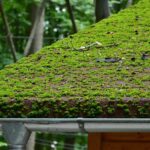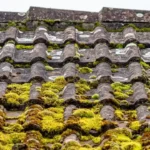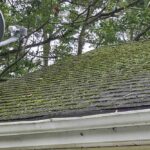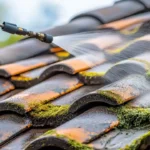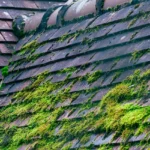When living in cold climates, managing roof drainage systems becomes crucial. These systems are designed to handle the challenges posed by snow, ice, and freezing temperatures. Understanding the importance of efficient drainage can save homeowners from costly repairs and ensure the longevity of their roofs.

The Importance of Roof Drainage in Cold Climates
In regions where temperatures frequently drop below freezing, roof drainage systems must be robust and reliable. Without proper drainage, water can accumulate, freeze, and cause significant damage. This can lead to issues like ice dams, which can compromise the integrity of your roof.
Understanding Ice Dams
Ice dams occur when heat from the house melts snow on the roof. The water then refreezes at the eaves, creating a dam that prevents proper drainage. This trapped water can seep into the roof, causing leaks and structural damage. For more detailed guidance on how to combat ice dams, you can explore this resource.
Components of Roof Drainage Systems
Effective roof drainage systems in cold climates are composed of several critical components. Understanding each part can help you maintain your system effectively.
Gutters and Downspouts
Gutters and downspouts are essential for directing water away from your home. In cold climates, it’s important to ensure that these components are clear of debris and ice. Regular maintenance can prevent clogs and damage. Consider learning more about maintaining downspouts from this DIY guide.
Roof Heating Cables
Heating cables are an effective addition to roof drainage systems in cold climates. They help prevent ice buildup by maintaining a consistent temperature on the roof surface. This can be particularly useful in areas prone to heavy snowfall.
Designing a Roof Drainage System for Cold Climates
Designing a roof drainage system that can withstand cold climates involves careful planning and consideration of local weather patterns. Key factors include roof slope, insulation, and material selection. Consulting with professionals can provide valuable insights. For example, this external guide offers expert advice on drainage solutions.
Material Selection
Choosing the right materials is crucial. Metal roofs, for example, are often preferred in cold climates due to their durability and resistance to snow and ice accumulation. Additionally, ensuring that gutters and downspouts are made of materials that can withstand freezing temperatures is important.
Roof Slope and Insulation
Proper roof slope is essential for effective drainage. A steeper slope facilitates the runoff of snow and ice, reducing the risk of accumulation. Insulation is equally important, as it helps maintain consistent temperatures, preventing the formation of ice dams.
Maintenance Tips for Roof Drainage Systems
Regular maintenance of roof drainage systems is key to ensuring their functionality in cold climates. Here are some tips to keep in mind:
Regular Inspections
Conducting regular inspections can help you identify potential issues before they become major problems. Consider using a comprehensive inspection checklist to ensure thorough evaluations.
Cleaning and Repairs
Keeping gutters and downspouts clean is essential. Remove any debris or ice that may obstruct water flow. Additionally, promptly address any repairs needed to prevent further damage.
Innovations in Roof Drainage Systems
Advancements in technology have led to innovative solutions for roof drainage systems in cold climates. These innovations aim to enhance efficiency and durability.
Heated Gutter Systems
Heated gutter systems are designed to melt snow and ice, ensuring continuous drainage. These systems can be particularly beneficial in areas with heavy snowfall and freezing temperatures.
Smart Roof Drainage Systems
Smart technologies are being integrated into roof drainage systems, providing homeowners with real-time data and alerts. These systems can monitor weather conditions and adjust drainage mechanisms accordingly.
Conclusion
Investing in reliable roof drainage systems for cold climates is crucial for maintaining the integrity of your home. By understanding the components, design considerations, and maintenance requirements, you can ensure your roof remains in optimal condition, even in the harshest weather. For more insights on roof drainage solutions, you can visit this external resource.

FAQs
How do I prevent ice dams on my roof?
Preventing ice dams involves proper insulation, ventilation, and maintaining a consistent roof temperature. Installing heating cables and ensuring thorough drainage can also help.
What materials are best for roof drainage in cold climates?
Metal roofs and durable gutter materials like aluminum are often preferred for their resistance to snow and ice. These materials can withstand freezing temperatures and heavy snowfall.
How often should I inspect my roof drainage system?
Regular inspections are recommended at least twice a year, typically before and after winter. This helps identify any potential issues and ensures the system is functioning properly.
This article contains affiliate links. We may earn a commission at no extra cost to you.




